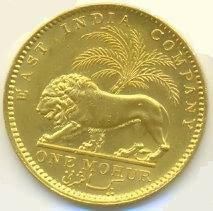During that time Japan was ruled by fierce Shogun warlords employing highly skilled samurai armies. Paper money was first issued in Japan in the early seventeenth century, when serious shortages of coins arised. During the Edo period many local clans, merchants, communities and banks issued their own currency.
These tall, thin notes (approximately 6" x 1.5", 160mm x 40mm) were hand-printed on heavy paper with woodblocks by local artisans. These Hansatsu scrip had a face value in silver coinage, but gold and copper scrip also circulated. In addition, some scrip was marked for exchange in kind for a commodity such as rice, wine or oil.
Counterfeiting was discouraged by severe punishment, as well as by elaborate techniques such as watermarking and the use of special hidden characters. In fact, the artisans who made the paper money had to sign an oath of secrecy in blood, promising not to reveal any of these anti-counterfeiting measures.
 Both sides are printed with black ink, overprinted with red validation stamps. On one side, at the top, is an intricate vignette of a multi-armed goddess seated in the lotus position, while at the bottom is a fierce-looking man-headed goat, with two storks flying above and two turtles at his feet. Between these two vignettes are five columns of Japanese characters. On the other side of the note are numerous Japanese characters in columns, along with a vignette of a plump, smiling god seated in the lotus position, with two figures behind him, both holding short swords.
Both sides are printed with black ink, overprinted with red validation stamps. On one side, at the top, is an intricate vignette of a multi-armed goddess seated in the lotus position, while at the bottom is a fierce-looking man-headed goat, with two storks flying above and two turtles at his feet. Between these two vignettes are five columns of Japanese characters. On the other side of the note are numerous Japanese characters in columns, along with a vignette of a plump, smiling god seated in the lotus position, with two figures behind him, both holding short swords.



HANSATSU note of Silver 3 Bu Trade Note issued by TSUDERA in BITCHU ( OKAYAMA ).
HANSATSU note of Silver 1 Monme Trade Note issued by KOUYASAN DAITOKUIN in YAMATO ( NARA ) in GANJI 1sr year ( 1864 ).


This note above was exchanged for 1 momme of silver.
In 1868, new Meiji Government of Japan was restored. The leaders of the Samurai overthrew the Tokugawa Shogunate. And all different domains were abolished and merged. In 1871 due to incompatible denominations of Hansatsu notes, the Meiji Government ordered the abolition of the han system and ordered the exchange of all scrip for the national currency. In 1872 new currency introduced in Japan indicating the value in yen and the smaller sen and rin. And till the present times Yen is still the currency of Japan.
But surely these around 150 years old notes would make make your collection something special. In a very good condition these each notes may cost around US$30 to 50.






 The first coin above is a copper drachm coin of Jammu region of Northwest India with the portrait of king facing right and legend around it in circle in greek language on obverse side and on the reverse Pallas standing right with thunderbolt and shield with kharoshti (pali) letters around.
The first coin above is a copper drachm coin of Jammu region of Northwest India with the portrait of king facing right and legend around it in circle in greek language on obverse side and on the reverse Pallas standing right with thunderbolt and shield with kharoshti (pali) letters around. 
 This third coin is a silver tetradrachm coin of the Arachosia region.
This third coin is a silver tetradrachm coin of the Arachosia region.